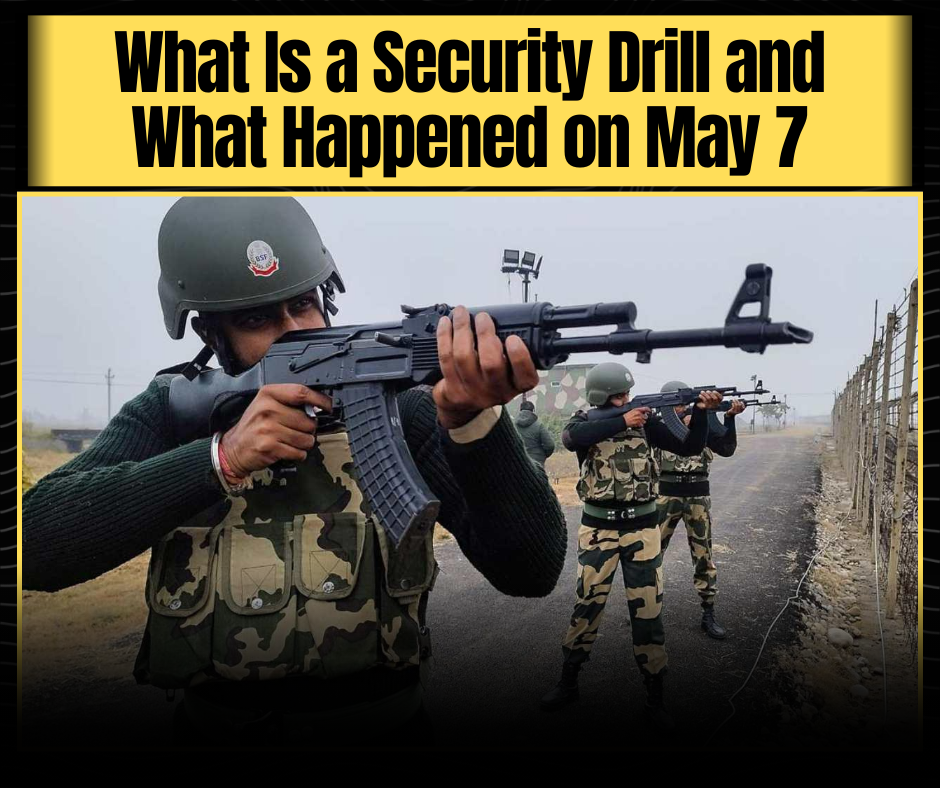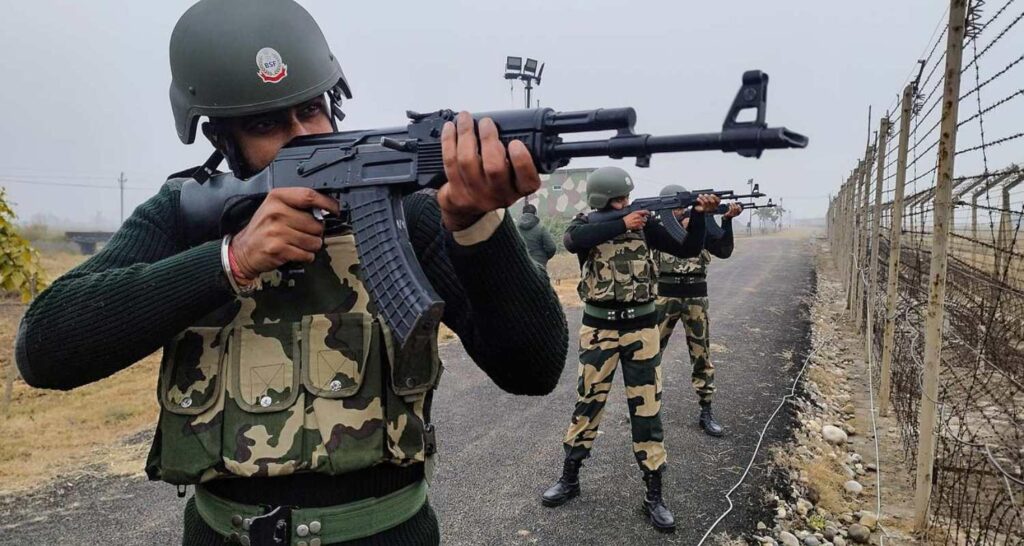
Nationwide Security Drill Set for May 7: What It Means and What to Expect
On May 7, 2025, India will conduct a nationwide civil defence mock drill—its first since 1971. Initiated by the Centre, this large-scale exercise is designed to prepare the public and authorities for hostile attacks following the recent Pahalgam terror incident and growing tensions with Pakistan.

Quick Read:
- Date of Drill: Wednesday, May 7, 2025
- Purpose: To boost national preparedness for air raids and hostile attacks
- Trigger: April 22 Pahalgam terrorist attack that killed 26 people
- First Nationwide Drill Since: 1971 Indo-Pak war
- Key Activities: Blackout drills, air raid siren tests, evacuation rehearsals, first-aid training
- Participants: Civilians, students, civil defence teams, NCC, NSS, NYKS, and home guards
- Districts Involved: 244 civil defence districts across India
Full Story:
India is set to undergo a major security readiness test on May 7, as the Union Home Ministry has directed all states and Union Territories to take part in a nationwide civil defence mock drill. This unprecedented move comes in the aftermath of the April 22 terrorist attack in Pahalgam, where 26 people tragically lost their lives, and amidst escalating cross-border tensions with Pakistan.
This marks the first nationwide drill of its kind since 1971, a year that witnessed the last full-scale war between India and Pakistan. The initiative underscores the Centre’s push to improve civilian awareness and response capabilities in the event of an air strike or hostile incursion.
So, What Exactly Is a Mock Drill?
Think of a mock drill as a practice run for emergencies. It’s a controlled simulation designed to test how well people and institutions respond when disaster strikes. Whether it’s a fire, natural calamity, or security threat, these drills teach quick decision-making and survival techniques without any real danger.
Participants—ranging from officials to civilians and students—go through step-by-step emergency scenarios: evacuating buildings, using first aid kits, coordinating with authorities, or even participating in blackouts.
What Will Happen on May 7?
According to the Home Ministry’s detailed notification, multiple drills and simulations will be carried out across 244 civil defence districts in India. Here’s what to expect:
- Air Raid Siren Tests: Authorities will activate air raid sirens to check how effectively they alert citizens to aerial threats.
- Blackout Exercises: In some areas, residents may be asked to turn off all lights to simulate night-time air raids, a tactic to avoid enemy detection.
- Control Room Preparedness: Emergency control rooms—and their backup “shadow rooms”—will be evaluated for responsiveness.
- Communication Checks: Hotline and radio links between civil authorities and the Indian Air Force will be tested to ensure fast communication.
- Evacuation Drills: District officials will rehearse how to safely evacuate people from danger zones to secure areas.
- First Aid and Firefighting Training: Civilians, including students, will receive hands-on training in basic first aid, using fire extinguishers, and other emergency equipment.
- Infrastructure Protection: Sensitive sites like airfields, refineries, and railway yards will undergo drills to practice shielding them from enemy surveillance or attacks.
- Public Awareness Campaigns: Volunteers will demonstrate basic civil defence techniques—like where to shelter during an air raid or how to respond to a chemical attack.
In a preview of what’s to come, Ferozepur in Punjab recently conducted a blackout drill in cantonment areas, switching off lights to prepare residents for potential real-life scenarios.
Who’s Involved?
The drill isn’t just for government officials or the military—it’s a whole-of-society approach. Participants will include:
- Civil defence volunteers
- Home guards
- Students from schools and colleges
- NCC (National Cadet Corps)
- NSS (National Service Scheme)
- NYKS (Nehru Yuva Kendra Sangathan)
- Local district authorities
By involving such a diverse mix, the Centre aims to ensure that everyday citizens are well-equipped to handle emergencies—not just law enforcement or military personnel.
Why Now?
The timing of the drill is no coincidence. The terrorist attack in Pahalgam served as a stark reminder of ongoing security risks. Combine that with persistent cross-border firing and a volatile geopolitical climate, and it’s clear that preparedness is not just wise—it’s necessary.
This drill is a proactive step toward strengthening India’s internal defence mechanisms, ensuring that both citizens and emergency services know exactly what to do if things go south.
Final Thoughts
Mock drills like the one scheduled for May 7 aren’t just symbolic—they save lives by building muscle memory and instilling confidence in times of crisis. Whether you’re a student, a civil defence volunteer, or just a resident in one of the participating districts, your role in this nationwide effort matters.
So, if you hear sirens or see emergency activity on May 7, don’t panic—it’s a drill. But pay close attention, because the knowledge and preparedness you gain might make all the difference someday.











Post Comment